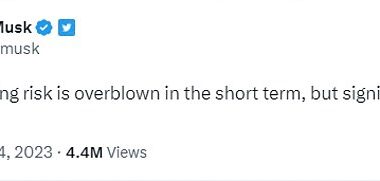Forky is the most prominent of the new characters in Toy Story 4, the latest in the flagship franchise that launched Pixar Animation Studios and eventually won it a Best Animated Feature Film Oscar. Forky is the name of a spork that a kindergartener rescues from the garbage and adorns with pipe-cleaner arms, googly eyes, and popsicle-stick feet. It takes a long time for this dim, flimsy thingamabob to accept his own sentience. He believes he belongs in the trash.
Forky is also a symbol of a company that’s struggling to give its audience something new. Pixar was once associated with original animation, expanding the limits not only of computer renderings (those clouds of dust in Toy Story 2, the animal fur in Monsters Inc., the photorealism of The Good Dinosaur, etc.), but of a more sophisticated emotional palette, too. But seven of the last 11 Pixar films have been sequels, most a notch or two worse than the original, and all reflecting a parent company that’s more focused on paying off existing properties than dazzling audiences with unfamiliar, audacious ideas. As the only examples of Pixar sequels that have added richness and depth to the series, Toy Story 2 and Toy Story 3 earned a little faith in a fourth go-around. But Forky? Really? Is a filthy, glued-together spork worthy of the franchise of Woody and Buzz Lightyear?
And yet Forky (Tony Hale) is kind of brilliant, precisely because he’s so counterintuitive. The makers of Toy Story 4 could never hope to create a character as beloved and mythologically loaded as Sheriff Woody and Buzz Lightyear, who each come with full backstories and three films’ worth of psychological dimension. To go the other way with Forky — to make him a crude, pea-brained, semi-suicidal hunk of plastic — sends the message that the stakes may be lower in this Toy Story iteration, but the whimsy and absurdity will be amped up. There’s some quality grown-up material here about the virtues of getting lost, and some Forky-specific insight into the attachment children can have to their own unsanctioned, unmanufactured, uncommercial creations. But Toy Story 4 seems content with its Forkiness, and that lack of pretension is mostly an asset.
It doesn’t entirely beat back the familiarity of the Toy Story formula, however, with its toggling back and forth between Rube Goldberg action setpieces and aggressive yanks of the heartstrings. The opening sequence, for example, is sheer boilerplate, flashing back to a time when the toys’ owner Andy was still a boy and Woody (Tom Hanks), Buzz (Tim Allen), and the gang banded together to rescue a wayward remote-controlled car from an evening rainstorm. All that frantic action sets up a scene where Woody parts ways with Bo Peep (Annie Potts), the sheep-tending doll he adores, and tables a future where he, too, will get shipped off in a cardboard box to destinations unknown. It’s a heartbreaking moment for him, but it also hints at a time when detaching himself from Andy might lead to an equally satisfying phase of his life.
:no_upscale()/cdn.vox-cdn.com/uploads/chorus_asset/file/16341583/p186_251g_pub.pub16.2590_FINAL.jpg)
In the present, though, Andy’s toy collection has been bequeathed to Bonnie, the kindergartner who makes Forky on her first day of orientation, and quickly relegates Woody to the closet. When Bonnie and her parents pile into an RV for a mini-vacation before school starts, Forky opts to throw himself out of an open window, and the ever-loyal Woody does the noble thing and goes after him. Woody does his best to rehabilitate Forky and convince this glue-caked Gumby of his own value, but the wispy thing soon gets itself into more trouble involving an ominous set of characters, including an unloved 1950s pull-string doll named Gabby Gabby (Christina Hendricks) and a coterie of creepy ventriloquist dolls.
Toy Story 4 adds more merchandisable characters to the collection, too, including Bunny and Ducky, two plush carnival prizes voiced by comedy duo Jordan Peele and Keegan-Michael Key, and Duke Caboom, a Canadian daredevil voiced by Keanu Reeves, whose patriotism is equalled only by his consistent ineptitude as a stuntman. Duke’s previous owner was a boy let down by the toy’s failure to live up to the promise of his TV commercial, and the melancholy sticks with him, just as it sticks with all the Toy Story characters who’ve had to grapple with abandonment. As much as the Toy Story series has been about friendship and adventure, it’s also been about obsolescence and loss, that inevitable turning of the page.
:no_upscale()/cdn.vox-cdn.com/uploads/chorus_asset/file/16341586/ToyStory4_WOODY_FORKY.jpg)
Because the second and third Toy Story films have taken the audience to this bittersweet place before, Toy Story 4 occasionally feels redundant, settling into a verse-chorus-verse formula where sequences of group heroics are followed by mordant existential reflection. While it falls short of its predecessors, the film is generally more confident and inventive than any of the non-Toy Story Pixar sequels.
And it does allow Woody to grow in at least one crucial respect. Rather than feeling repeatedly stung by loving and losing one child after another, he starts to see the value in independence, which is not only part of being an adult, but part of getting over a relationship with an expiration date. With this third sequel to Toy Story, Pixar has gotten away with pushing its own expiration date on the series. But those tiny spork tines won’t hold it together much longer. It’s time to get lost.
This article is from The Verge









